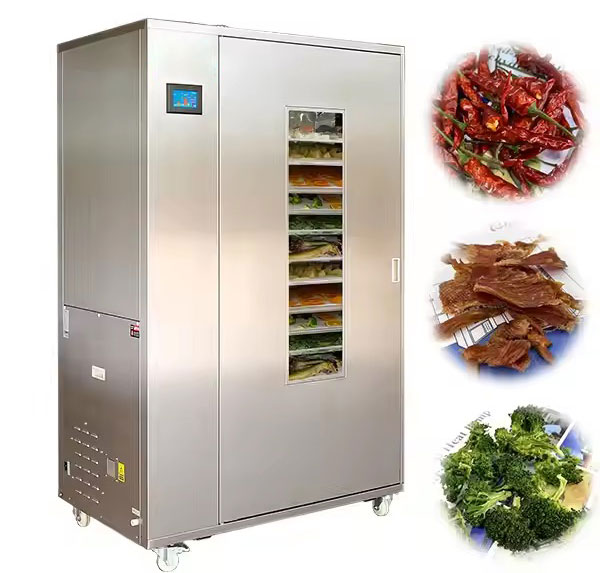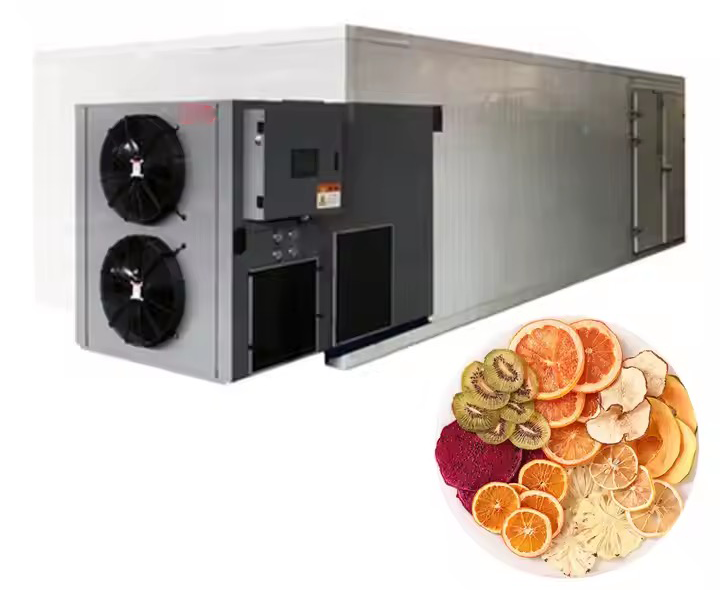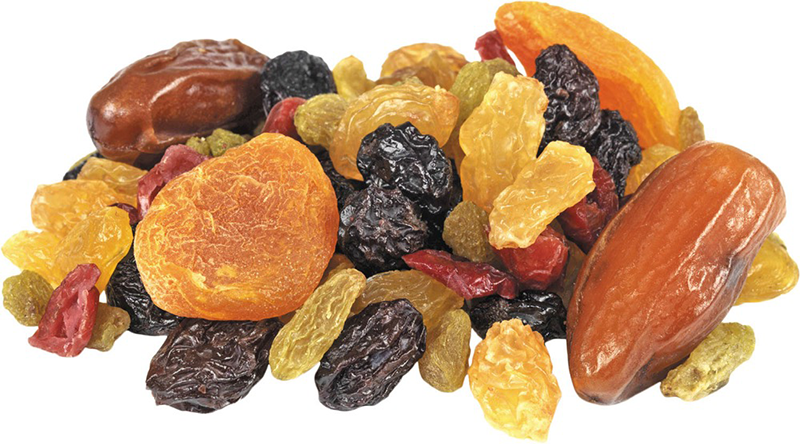
Content Menu
● Introduction to Food Dehydration Machines
>> How Food Dehydrators Work
● Energy Efficiency of Food Dehydrators
>> Comparison of Energy Consumption
● Features of Energy-Efficient Food Dehydrators
>> Multiple Temperature Settings
>> Quiet Operation and Compact Design
>> Sustainable Food Waste Management
● Benefits of Using Food Dehydrators
>> Nutrient Preservation
>> Cost Savings
>> Environmental Benefits
>> Promoting Healthy Snacking
>> Supporting Local Farmers
● Choosing the Right Dehydrator
● Conclusion
● Frequently Asked Questions
>> 1. What types of food can be dehydrated?
>> 2. How do I choose the right food dehydrator?
>> 3. Are food dehydrators energy-efficient?
>> 4. Can I use a food dehydrator for food waste management?
>> 5. How do I store dehydrated food?
● Citations:
In recent years, the demand for energy-efficient food dehydration machines has been on the rise in Australia. These machines are not only beneficial for preserving food but also contribute to reducing waste and promoting sustainable living. This article will delve into the world of food dehydration machines available in Australia, focusing on their energy efficiency, features, and benefits.

Introduction to Food Dehydration Machines
Food dehydration machines, also known as food dehydrators, are designed to remove moisture from food, thereby extending its shelf life and preserving nutrients. These machines are particularly useful for households and businesses looking to reduce food waste and create healthy snacks.
How Food Dehydrators Work
Food dehydrators use a combination of heat and air circulation to remove moisture from food. This process is achieved through a heating element and a fan that circulates air across the food trays. By maintaining a consistent temperature, dehydrators ensure that food is dried evenly without cooking it, thus preserving its nutritional value.
Energy Efficiency of Food Dehydrators
Energy efficiency is a key factor when selecting a food dehydrator. Most modern dehydrators are designed to be energy-efficient, using thermostats to maintain optimal temperatures and minimize energy consumption. For example, the Foodcycler Eco 5, a popular model in Australia, uses less than 1.5 kW per cycle, making it an economical choice for households.
Comparison of Energy Consumption
| Dehydrator Model | Energy Consumption |
| Foodcycler Eco 5 | Less than 1.5 kW |
| Tribest Sedona Express | 470 Watts |
| Cosori Premium Dehydrator | 600 Watts |
Features of Energy-Efficient Food Dehydrators
Energy-efficient food dehydrators often come with advanced features that enhance their performance and user experience.
Multiple Temperature Settings
Dehydrators like the Tribest Sedona Express offer adjustable temperature settings, allowing users to customize the drying process for different types of food. This feature ensures that delicate foods are preserved without losing their nutritional value.
Quiet Operation and Compact Design
Many modern dehydrators are designed to be compact and quiet, making them suitable for home use. The Cosori Premium Dehydrator is a budget-friendly option that offers a quiet operation and a compact footprint, ideal for small kitchens.
Sustainable Food Waste Management
In addition to preserving food, some dehydrators like the Foodcycler Eco 5 can also process food waste, converting it into nutrient-rich fertilizer. This feature aligns with Australia's efforts to reduce landfill waste and promote sustainable living.

Benefits of Using Food Dehydrators
Using a food dehydrator offers several benefits, from preserving nutrients to reducing food waste.
Nutrient Preservation
Dehydrators remove moisture from food without cooking it, which helps preserve the natural nutrients and enzymes present in the food. This makes dehydrated foods a healthier alternative to commercially processed snacks.
Cost Savings
By drying excess food, households can reduce waste and save money on grocery bills. Dehydrated foods also have a longer shelf life, allowing for bulk purchases without worrying about spoilage.
Environmental Benefits
Food dehydrators contribute to sustainable living by reducing food waste and the emissions associated with food disposal. They also promote the use of locally sourced ingredients, supporting local agriculture.
Promoting Healthy Snacking
Dehydrators enable users to create a variety of healthy snacks at home, such as dried fruits, vegetable chips, and jerky. This helps families avoid processed foods and maintain a balanced diet.
Supporting Local Farmers
By preserving seasonal produce, households can support local farmers throughout the year. This not only boosts local economies but also ensures that consumers have access to fresh, high-quality ingredients.
Choosing the Right Dehydrator
When selecting a food dehydrator, several factors should be considered:
1. Energy Efficiency: Look for models with low energy consumption to save on utility bills.
2. Temperature Range: Ensure the dehydrator offers adjustable temperature settings to accommodate different types of food.
3. Number of Trays: Choose a model with enough trays to meet your drying needs.
4. Noise Level: Opt for quiet operation if you plan to use the dehydrator during the night or in a shared living space.
5. Additional Features: Consider models with built-in timers or automatic shut-off for convenience.
Conclusion
In conclusion, energy-efficient food dehydration machines are readily available in Australia, offering a range of benefits from nutrient preservation to sustainable waste management. Whether you're a household looking to reduce waste or a business seeking to create healthy snacks, there's a dehydrator model that suits your needs.

Frequently Asked Questions
1. What types of food can be dehydrated?
Dehydrators can process a wide variety of foods, including fruits, vegetables, meats, and even flowers. They are versatile tools for preserving almost any type of food.
2. How do I choose the right food dehydrator?
When choosing a dehydrator, consider factors such as energy efficiency, temperature range, and the number of trays. Also, think about the space available in your kitchen and your specific needs, such as quiet operation or multiple dehydration settings.
3. Are food dehydrators energy-efficient?
Yes, most modern food dehydrators are designed to be energy-efficient. They use thermostats to maintain optimal temperatures, minimizing energy consumption. Running costs are typically low, often less than $1 for 24 hours of operation.
4. Can I use a food dehydrator for food waste management?
Some models, like the Foodcycler Eco 5, can process food waste into fertilizer. This feature is beneficial for households looking to reduce their environmental impact by diverting waste from landfills.
5. How do I store dehydrated food?
Dehydrated food should be stored in airtight containers to maintain its quality and extend its shelf life. It's best to store them in a cool, dark place to prevent moisture absorption.
Citations:
[1] https://www.enrich360.com.au/bench-top-dehydrators
[2] https://www.goodhousekeeping.com/cooking-tools/g30200878/best-food-dehydrator/
[3] https://healthyhabitats.com.au/products/foodcycler-eco-5-food-waste-dehydrator
[4] https://www.youtube.com/watch?v=mtDzdYoyeR8
[5] https://www.webstaurantstore.com/guide/741/food-dehydrators-buying-guide.html
[6] https://www.ukjuicers.com/dehydrator-faqs-a603
[7] https://www.rawblend.com.au/sedona-food-dehydrators/
[8] https://www.thespruceeats.com/best-food-dehydrators-4077285
[9] https://www.linkedin.com/pulse/common-questions-food-dehydrators-aradmachinery
[10] https://www.commercialdehydrators.com.au/category/premium-domestic-dehydrators
[11] https://www.dehydratefood.info/faq/
[12] https://learn.eartheasy.com/guides/a-beginners-guide-to-dehydrating-food/
[13] https://www.thepurposefulpantry.com/dehydrating-faq/
[14] https://www.aromaco.com/faq/food-dehydrators/
[15] https://www.foodandwine.com/lifestyle/kitchen/best-food-dehydrators
[16] https://excaliburdehydratorsaustralia.com/pages/dehydrators
[17] https://stock.adobe.com/search?k=dehydrator
[18] https://www.istockphoto.com/photos/dehydrator
[19] https://www.allrecipes.com/article/how-to-use-a-food-dehydrator/
[20] https://www.shutterstock.com/search/dehydrator-machine
[21] http://bushcraftusa.com/forum/threads/food-dehydrator-questions.288768/
[22] https://quizlet.com/51354546/dehydration-questions-answers-flash-cards/
[23] https://www.reddit.com/r/Cooking/comments/12umm6q/do_food_dehydrators_cook_the_food/
[24] https://www.modelcarsmag.com/forums/topic/132971-food-dehydrator-questions/
[25] https://www.enrich360.com.au/commercial-dehydrators
[26] https://www.ecoguardians.com.au/soilfood/soilfood
[27] https://www.alamy.com/stock-photo/food-dehydrator.html
[28] https://www.goodhousekeeping.com/appliances/a31904157/what-is-a-dehydrator/
[29] https://www.youtube.com/watch?v=lEUA2t2XD5M
[30] https://www.youtube.com/watch?v=Zl4wTcCPJu0
[31] https://cooking.stackexchange.com/questions/54029/dehydrating-food-with-a-vacuum-chamber











